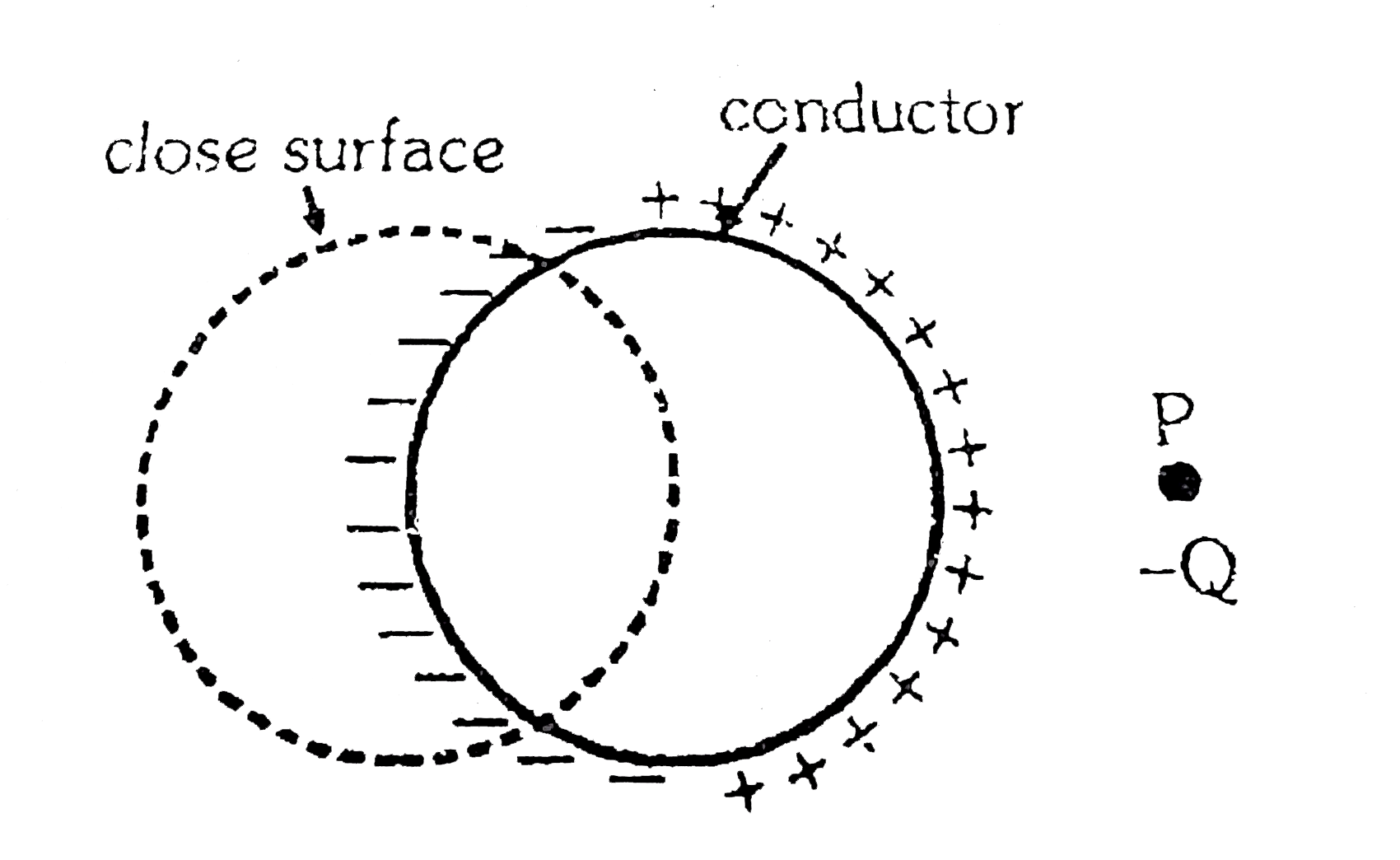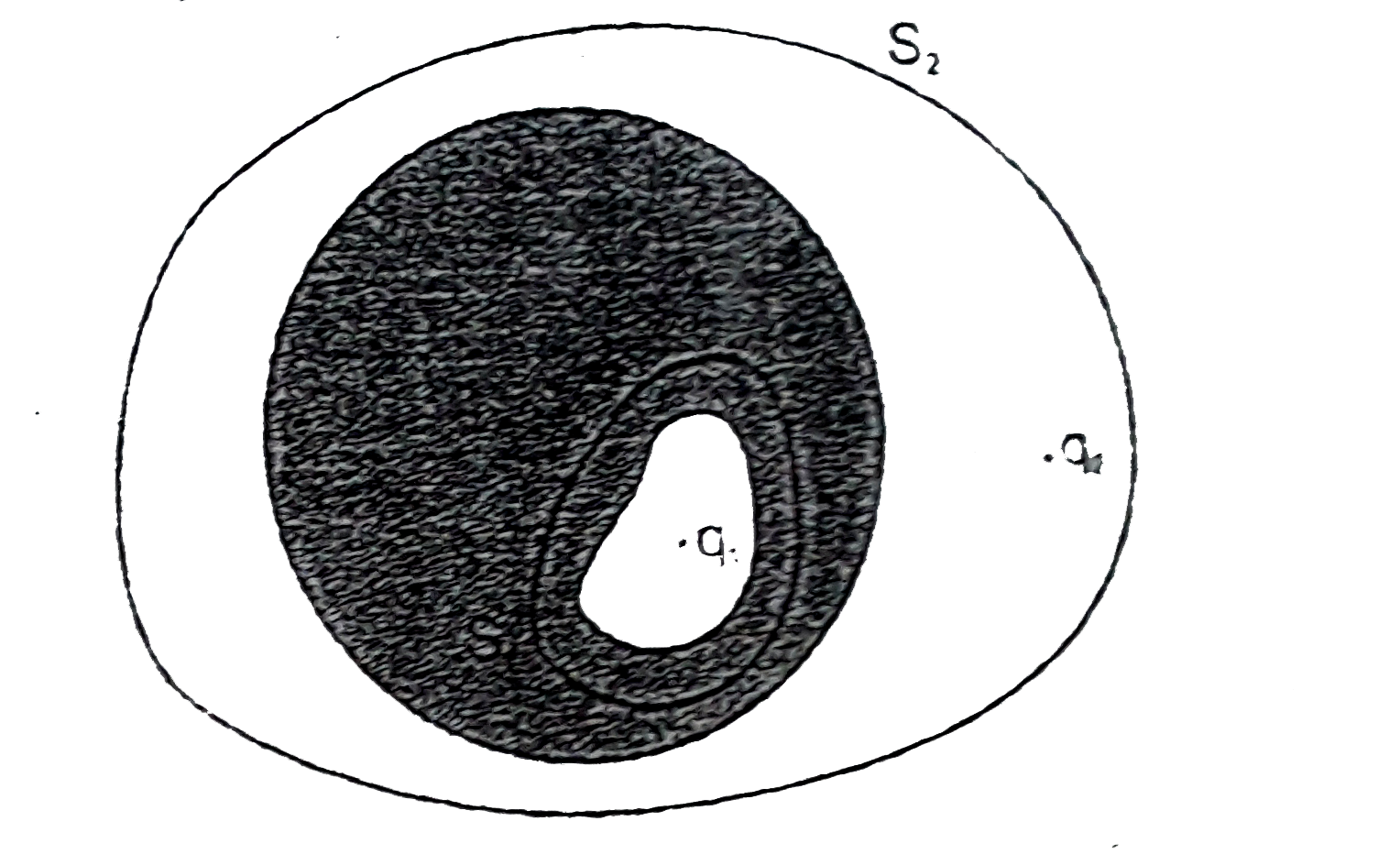If E = 0 at all points on a closed surface
electric flux through the surface is zero
the total charge enclosed by the surface is zero
no charge resides on the surface
all of these
The correct Answer is:D
Step by step video, text & image solution for If E = 0 at all points on a closed surface by Physics experts to help you in doubts & scoring excellent marks in Class 12 exams.
Updated on:21/07/2023Topper's Solved these Questions
Similar Questions
Which of the following statement is correct ? If E = 0 , at all points of a closed surface.
a. the electirc flux through the surface is zero.
b. the total charge enclosed by the surface is zero.
View SolutionAs shown in figure a closed surface intersects a spherical conductor. If a negative charge is placed at point P. What is the nature of the electric flux coming out of the closed surface?

View Solution
Knowledge Check
Figure shows a conducting sphere with a cavity. A point charge q1 is placed inside cavity, and q2 is placed out side the sphere →Ein is electric field due to charge induced on surface of cavity. →Eout is electric field due to charge induced on outer surface of sphere and →Enet is net field at any point. Two closed gaussian surface S1 & S2 are also drawn in the figure.
 A∫→Enet.→da for surface S1 is zeroB∫→Enet.→da for surface S2 is q1+q2ε0C∫→Ein.→da for surface S1 is −q1ε0D∫→Eout.→da for surface S2 is q1ε0
A∫→Enet.→da for surface S1 is zeroB∫→Enet.→da for surface S2 is q1+q2ε0C∫→Ein.→da for surface S1 is −q1ε0D∫→Eout.→da for surface S2 is q1ε0Assertion (A): Two equipotential surfaces can never intersect.
Reason (R) : Potential at all points of an equipotentialsurface is uniform.AIf both assertion and reason are true and the reason is the correct explanation of the assertion.BIf both assertion and reason are true but reason is not the correct explanation of the assertion.CIf assertion is true but reason is false.DIf the assertion is false but reason is true.If net charge enclosed by a Gaussian surface is zero, then
Assertion :- →E at any point on Gaussian surface is 0.
Reason :- No net charge is enclosed by Gaussian surface, so E = 0AIf both Assertion & Reason are True & the Reason is a correct explanation of the Assertion.BIf both Assertion & Reason are True but Reason is not a correct explanation of the Assertion.CIf Assertion is True but the Reason is False.DIf both Assertion & Reason are False.
A charge of 12 μC is kept inside a closed surface. What is the flux flowing through a portion of the surface, which subtends a solid angle of π at the point where are charge is situated?
View SolutionIn Gauss' s theorem ∮sEds=qε0 The surface integral is evaluated by choosing a closed surface called the Gaussian surface. Here
View SolutionAnswer questions on the basis of your understanding of the following paragraph and the related studied concept.
Electric flux, in general , through any surface is defined as per relation:
ϕE=∫→E.→ds , where integration has to be performed over the entire surface through which flux is required. The surface under consideration may be a closed one or an open surface. When flux through a closed surface is required we use a small circular sign on the integration symbol. Thus flux over a closed surface ∮E=∮→E.→ds. it is customary to take the outward normal as positive in this case.
A German physicist Gauss established a fundamental law to find electric flux over a closed surface. As per Gauss' law , the flux of the net electric field through a closed surface equals the net charge enclosed by the surface divided by ∈0.Mathematically ∮→E.→ds=1∈0[qen] , where qcn is the net charge enclosed within the surface. It is possible to derive Gauss' law from Coulomb's laws. Gauss' law can be applied to obtain electric field at a point due to continuous charge distribution for a number of symmetric charge configurations.
Consider a closed surface having certain charges both within and outside as shown. The total electric flux of the given closed surface is : (##U_LIK_SP_PHY_XII_C01_E03_011_Q01.png" width="80%">
View SolutionStatement - 1 : The flux crossing through a closed surface is independent of the location of encloses charge.
Statement - 2: Upon the displacement of charges within a closed surface, the Ē at any point on surface does not change.
View SolutionThe electric charges of +9C, -10C and -8C are enclosed anywhere by a closed surface. T.N.E.I. through that surface is
View Solution
